A beginners guide on how to keep your favorite trading cards in mint condition
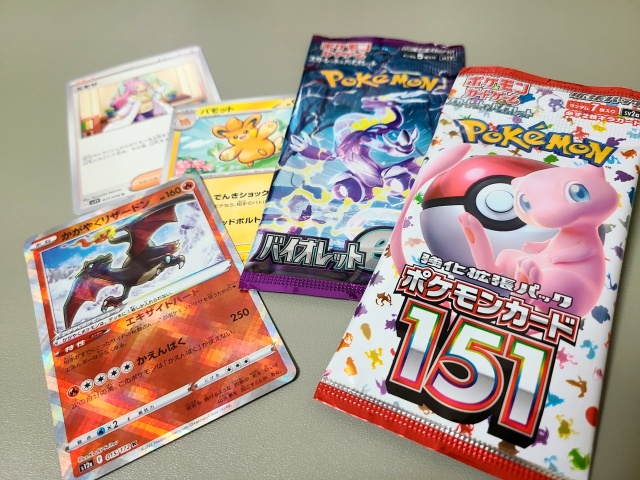
Tips for protecting cards from a new Pokémon collector.
While our Japanese-language reporter Maro has loved Pokémon for a while, it wasn’t until recently that she became hooked on the trading cards. The other day, she bought a few packs just to see what they were all about and was immediately transfixed by the beauty of the current illustrations. She chalks it up to beginner’s luck, but she also managed to score a couple of pretty rare cards right off the bat.
Now, however, she was faced with a dilemma. What’s the best way to protect her cards from scratches, humidity, and even UV rays? Since she was a complete newbie, she visited a few card shops to ask for advice and slowly gathered information about the best practices for preserving them. First, here’s the most foundational of all rules–you should immediately put your cards into individual protective sleeves as soon as you get them. The sleeve is a transparent cover that functions as the most basic layer of protection.

One thing that confused Maro a bit initially is that there are many different kinds of protective sleeves, including inner sleeves, regular sleeves, and top loaders. The kind of sleeves sold at official Pokémon Centers called “deck shields” are representative of the regular sleeve type. At first she thought that buying these would be enough, but that’s not necessarily the case.
For those cards that she really wants to protect, she learned that it’s standard to use at least two kinds of sleeves! Since paper cards are very susceptible to humidity, the trick is to slide on an inner sleeve from the top and a regular sleeve from the bottom. This method offers two layers of protection with less exposure to open air and dust.
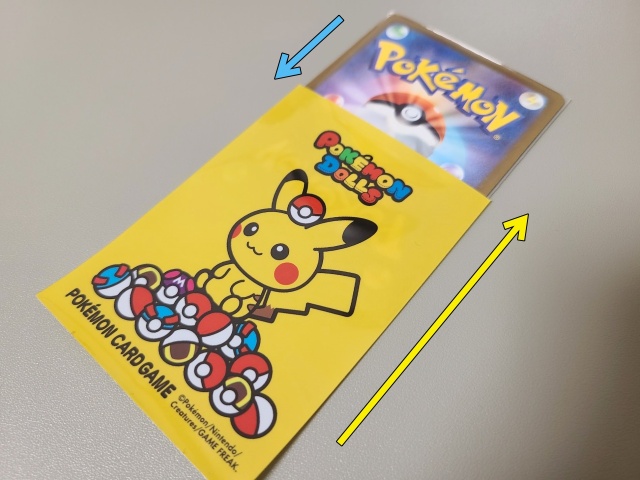
Maro immediately tried covering a few cards using this method and was amazed by just how much more protected they seemed. Even using just one sleeve was a great way to protect the card’s surface and edges from scratches. She recommends just making a habit of immediately encasing any new favorite cards in sleeves like this.
▼ From bottom to top: a card as is, a card in only an inner sleeve, and a card doubled up in an inner sleeve and a regular sleeve
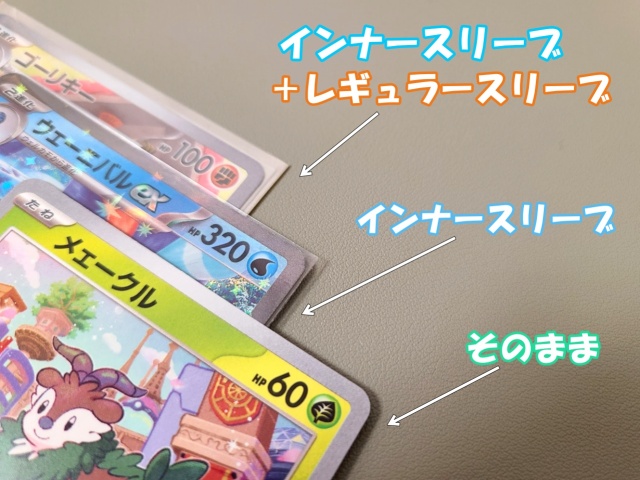
For those who play the Pokémon trading card game competitively, this double-layered sleeve approach may be the perfect middle-ground solution to keep them light and easily transportable. However, for those who want to preserve their cards to the utmost of their ability for display purposes, she recommends taking things a step further.
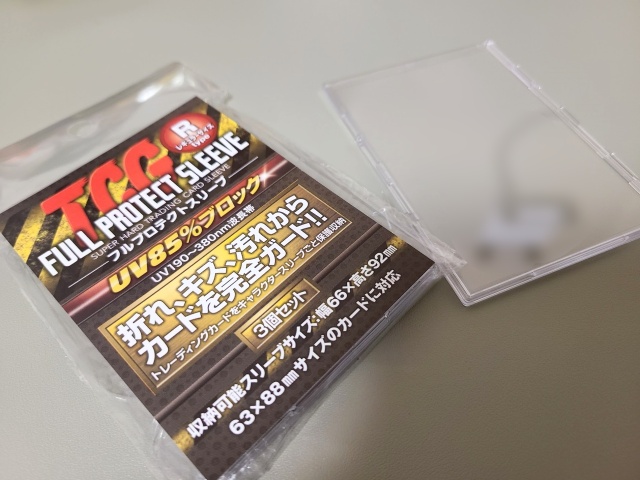
To do this, you must insert your cards into some kind of UV ray-blocking top loader card sleeve. A top loader (commonly known as a “card loader” in Japanese) is essentially the ultimate protective sleeve made of a thicker, harder material. For this step, Maro ordered some top loaders from Kawashima Factory, an Osaka-based brand that specializes in plastic product production. You can buy a three-pack from Kawashima Factory on Amazon Japan for 490 yen (US$3.45). The great thing about this brand is that they fit Pokémon cards that are already encased in the official sleeves. They’re also very thin, allowing for maximum storage potential.
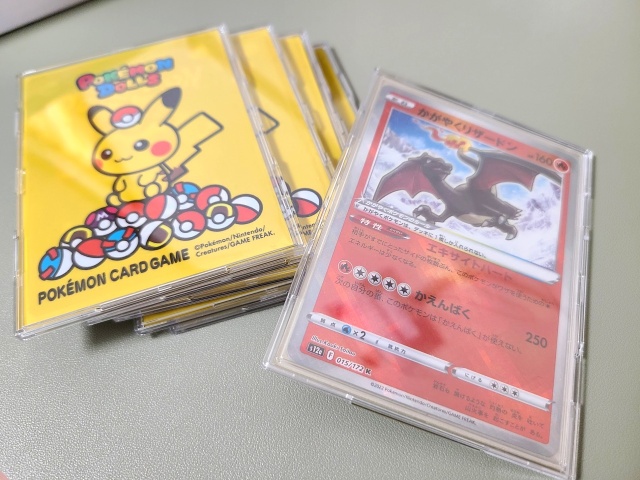
Maro wanted to try using both of these approaches to create the ultimate protective combination, so she readied one of her favorite cards, the Water-type Lumineon. Actually, she wanted to do something even more special for this one so that she could keep it on continuous display.
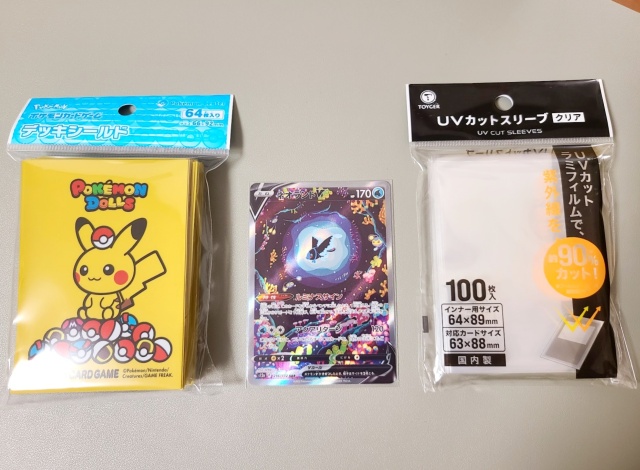
To that end, she purchased some special magnet top loaders with stands called “card armor” by Japanese maker Sunista. They come in a pack of four on Amazon Japan for 1,990 yen. They’re UV ray-blocking, have a high degree of transparency, are long-lasting, and just look, well, stylish.
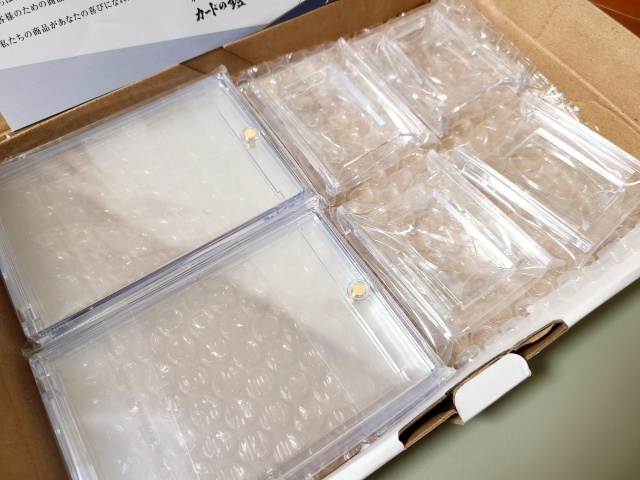
She loaded her Lumineon card into the magnet top loader, set it on the stand, and voila! It looked like something you’d see at a museum. The sleek design of the top loader coupled with the gorgeous illustration of the card seemed to elevate it to another level.

On top of everything else, perhaps the best thing about this particular top loader was that it was extremely easy to open and close and she could also adjust the angle of the stand depending on where she wanted to display it. It would be hard to resist swapping out cards on a daily basis when things were this easy. Although the price tag came out to be just under 500 yen per top loader and stand, this level of quality was definitely worth it for those ultra special cards in her collection.
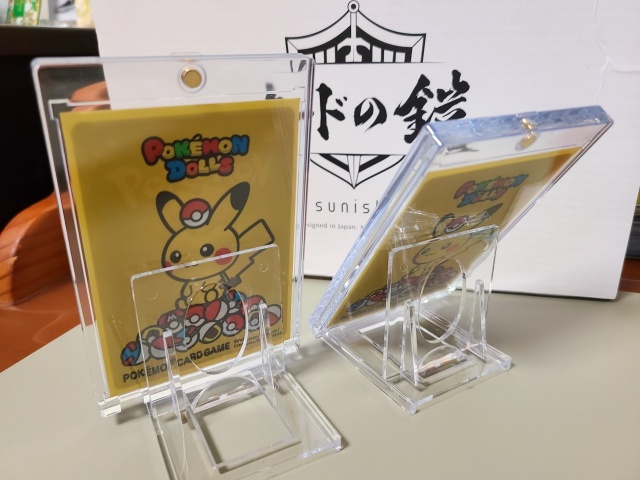
Maro would like to share a couple of other tips in closing. Please note that while Pokémon Centers sell adorable limited-edition display frames, they’re not UV ray-blocking, so you’ll want to insert your cards into a UV-protective sleeve first.
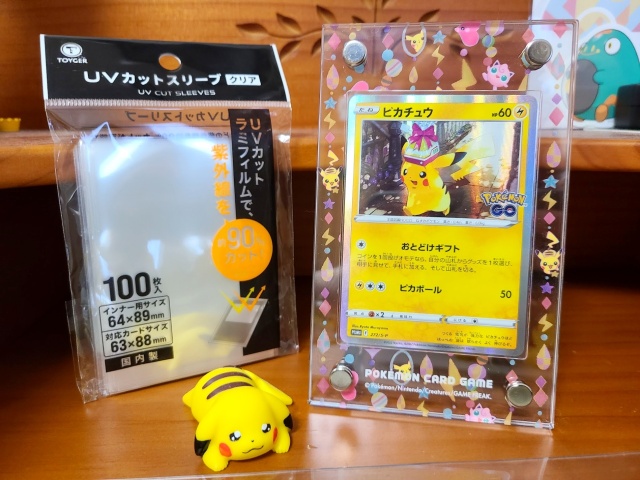
You can also buy simple but cute display frames at Japanese 100-yen stores.
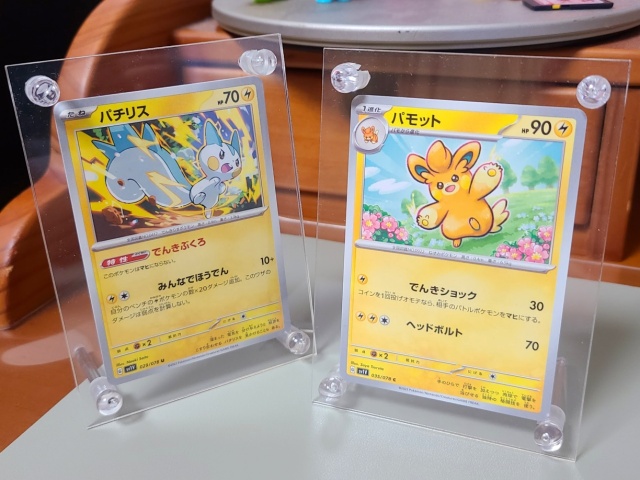
Readers who want to try Maro’s methods out for themselves can purchase the UV ray-blocking top loaders on Kawashima Factory’s Amazon Japan page and the magnet card armor top loaders with stands on Sunista’s Amazon Japan page.
Maro admits that she’s surprised at how quickly she went from square one to knowing this much about proper trading care care in such a short span of time. She knows that the pros have even better strategies up their sleeves [pun intended], but for now she’s very content with her approach for her own beginning collector purposes.
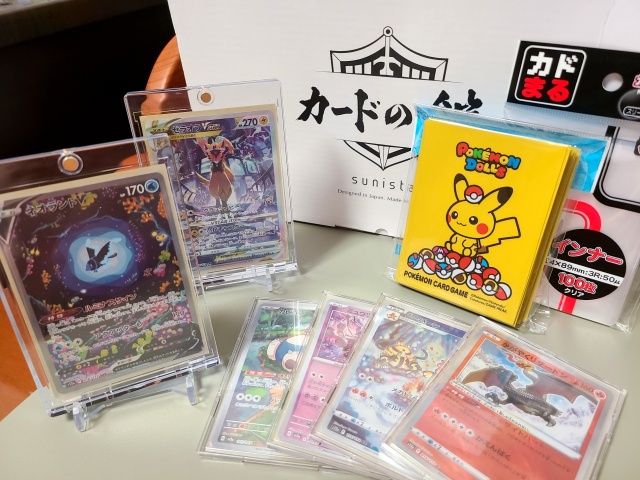
If you’re just reading Maro’s preemptive tips for protecting your trading cards now but already have a bunch of warped cards, never fear because we’ve also got some handy tips for fixing them quickly and easily.
All images © SoraNews24
Credit:

0 comments: